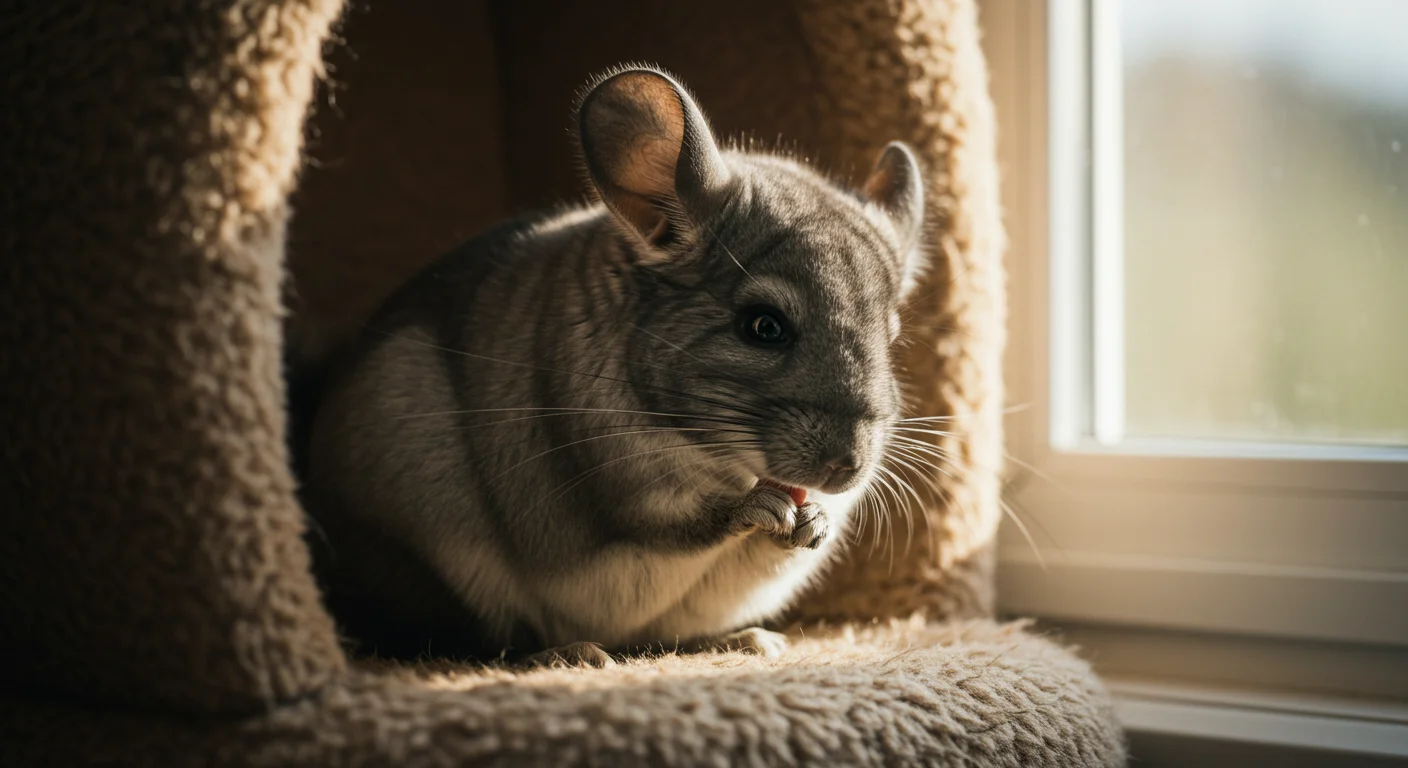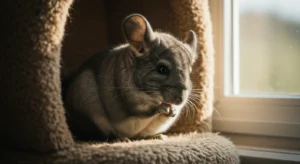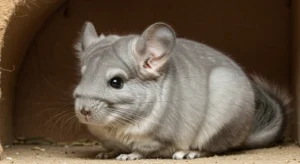Safe Playtime Activities for Chinchillas Outside the Cage
While a large, well-equipped cage is essential, providing supervised playtime outside the cage offers vital physical exercise and mental stimulation for your chinchilla. It allows them to explore, run, jump, and interact with their environment on a larger scale. However, ensuring this playtime is safe is paramount due to their curious nature and propensity to chew everything.
Benefits of Out-of-Cage Playtime
- Exercise: Allows for full-speed running and jumping beyond cage confines, helping prevent obesity.
- Mental Stimulation: Provides new sights, smells, and textures to explore, combating boredom.
- Bonding: Offers opportunities for positive interaction with owners in a relaxed setting.
- Stress Reduction: Allows them to burn off excess energy and engage in natural behaviors.
Safety First: Chinchilla-Proofing is Non-Negotiable
Before letting your chinchilla out, the designated play area MUST be thoroughly chinchilla-proofed. This involves identifying and eliminating potential hazards:
- Electrical Cords: Hide, cover with chew-proof protectors, or unplug completely.
- Toxic Plants: Remove all houseplants.
- Chemicals/Toxins: Secure all cleaning supplies, medications, human food, etc.
- Small Objects: Remove anything small enough to be ingested (paper clips, buttons, etc.).
- Chewable Hazards: Protect baseboards, furniture legs, books, important papers.
- Escape Routes: Close doors/windows securely, block gaps under doors, cover vents.
- Tight Spaces: Block access behind appliances or under furniture where they could get stuck.
- Other Pets: Ensure dogs, cats, or other pets are kept out of the play area.
Referencing a detailed chinchilla home safety checklist before each session is recommended.
Supervision alone is not enough. Proofing the area beforehand is essential, as hazards can be accessed in seconds.
Setting Up the Play Area
- Choose a Location: A small, easily proofed room like a bathroom (toilet lid down, chemicals removed) or a blocked-off hallway is often ideal. Portable playpens designed for small animals can also create a contained space within a larger room.
- Provide Safe Items: Include familiar items from their cage like a hide house, chew toys, and maybe a tunnel or two.

Safe Playtime Activities
Keep it simple and safe:
- Free Exploration: Often, just the freedom to run, jump, and explore the safe space is enrichment enough.
- Climbing Opportunities: If using sturdy boxes or pet-safe structures, they may enjoy climbing. Ensure structures are stable and falls wouldn’t be from dangerous heights.
- Tunnels: Large cardboard tubes (ensure they can’t get stuck) or commercially bought willow tunnels provide fun passageways.
- Cardboard Castles: Create mazes or structures from large cardboard boxes (plain, no ink/tape/staples).
- Foraging Fun: Hide a few pieces of their regular pellets or a single safe treat (e.g., rosehip) in hay piles or cardboard tubes within the play area.
- Interaction with You: Sit on the floor and let your chinchilla approach you. Offer gentle scratches if they solicit it. Allow them to climb on you if they choose (wear appropriate clothing!). Avoid chasing. Many owners find these interactive chinchilla play ideas strengthen their bond.
- Dust Bath (Optional): You can offer their dust bath during playtime, but be prepared for dust to spread!
Supervision and Duration
- Constant Supervision: Never leave your chinchilla unattended during playtime, even for a moment. Stay in the room and keep an eye on them at all times.
- Start Short: Begin with shorter sessions (15-20 minutes) and gradually increase as you and your chinchilla become more comfortable.
- Watch for Stress: End playtime if your chinchilla shows signs of stress (hiding persistently, excessive freezing, frantic behavior) or tiredness.
- Typical Duration: 30-60 minutes is often a good duration for playtime, depending on the individual chinchilla’s energy levels.

What to Avoid During Playtime
- Exercise Balls: Clear plastic balls are dangerous – poor ventilation leads to overheating, they cause stress, and prevent natural movement/stopping.
- Harnesses/Leashes: Chinchilla skeletons are fragile, and harnesses can easily cause injury. They are not suitable for walks.
- Forcing Interaction: Let the chinchilla come to you. Avoid chasing, grabbing, or cornering them.
- Unsafe Toys: Avoid small plastic toys, items with small parts, unsafe woods, or fabrics with loose threads.
- Over-Treating: Stick to their regular diet; playtime isn’t treat time (except maybe one tiny piece for foraging).
Making Playtime a Routine
Try to offer playtime around the same time each day, preferably during their natural active periods (evening or early morning). Consistency helps them anticipate and enjoy this valuable enrichment.
Safe, supervised out-of-cage playtime is a fantastic way to enhance your chinchilla’s quality of life, promoting both physical health and mental well-being.
By prioritizing safety through meticulous proofing and constant supervision, and by offering simple, engaging activities, you can provide enriching playtime experiences that your chinchilla will look forward to.








